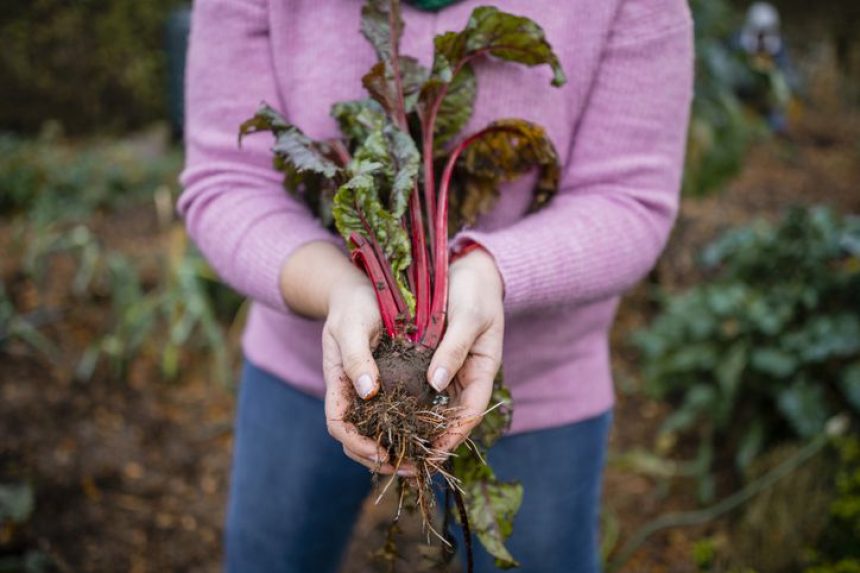Rhubarb is a cool-season garden vegetable that, once established, can produce a crop for up to 15 years, making it a particularly fruitful addition to any garden.
Growing rhubarb from crowns is the fastest way to get new plants, but you can grow rhubarb from seeds, too; it will be several years before you can harvest the stalks.
Here’s how to grow rhubarb from seeds.
Can You Grow Rhubarb From Seed?
Paul Viant / Getty Images
Yes, you can grow rhubarb from seed. The faster way to get rhubarb plants is to grow them from crowns, which can give you a harvest that same year. However, it’s easy and cost-effective to start rhubarb plants with seed, you’ll just have to wait three years to harvest.
Rhubarb is hardy in USDA hardiness zones 3 to 8 and, starting with seeds, is grown either as a perennial or short-lived perennial in zones 1 to 8. Seeds started in zone 9 are grown as an annual crop with a single harvest from March to May.
In hardiness zones with long, hot growing seasons, rhubarb is usually grown as an annual by planting new crowns every year.
Want more gardening tips? Sign up for our free gardening newsletter for our best growing tips, troubleshooting hacks, and more!
How to Grow Rhubarb From Seed
In the right conditions, rhubarb germinates in 7 to 14 days. Seeds should be directly sown or started in pots in early spring in cooler zones, and in late summer or early autumn in warmer zones, depending on climate.
How to Plant Rhubarb Seeds
Seeds started indoors germinate best between 68°F and 74°F. For direct sowing into the garden, wait until soil temperatures reach between 60°F and 70°F. Soak seeds in warm water for several hours before planting.
In the garden, choose a spot that receives six hours of sun exposure daily. Rhubarb needs well-draining soil with a pH of 6.0 to 7.0. In southern climates, provide afternoon shade. Work a good amount of aged compost into the planting bed. Sow seeds 1/2 inch deep and three feet apart in rows five feet apart. Cover with soil and water thoroughly.
To germinate in flats use a 50-50 mix of compost and potting soil. Plant one or two seeds per cell, 1/2 inch deep, cover, and water thoroughly. Place flats in a warm location that receives plenty of indirect light.
To grow rhubarb in pots, you’ll need 10-gallon containers. Plants grow to four feet tall, requiring lots of space. Choose a container with plenty of drainage holes. Use a 50-50 mix of aged compost and potting soil, plant seeds 1/2 inch deep, and water thoroughly.
Rhubarb Seedling Care
Water the seedlings when the soil gets dry on top. Soggy soil causes dampening off.
Harden off for a week to 10 days by gradually exposing flat-grown seedlings to outdoor temperatures and more sunlight before transplanting into the garden.
In zones with short growing seasons, try solarizing to raise soil temperature. In hotter climates add a layer of mulch to keep soil cool.
Do not fertilize the first year. Compacted soil can be amended with manure or aged compost in subsequent years. Remove flowering stalks throughout the growing season and brown and dried out foliage at the end of the growing season.
Harvest Rhubarb
Annual rhubarb grown from seed is harvested between March and May. Stalks are usually smaller and seldom develop the pink to red hues of perennial rhubarb.
Perennial rhubarb is harvested in May, June, and early July from 3-year-old crowns when stalks reach between 7 and 14 inches tall.
Harvest by pulling and twisting the stalk off at the base. Do not cut rhubarb which can damage the crown. Remove leaves which are toxic.
When to Plant Rhubarb Seeds by Zone
When and how to start rhubarb from seeds depends, not just on growing zone, but on frost dates, elevation, microclimate, and other growing conditions.
Ideal conditions for growing rhubarb include 500 hours of winter temperatures between 28°F and 40°F. Plants break dormancy above 40°F and begin to die back once temperatures reach 75°F.
Consider these planting dates a general rule of thumb.
- USDA zones 1 to 3: Start seeds indoors in flats or pots eight to 10 weeks before final frost, which occurs from early April to May. Transplant when soil temperature reaches 60°F.
- USDA zone 4: Direct sow two weeks before final frost, from late April to early May, or start seeds in flats eight to 10 weeks before final frost.
- USDA Zone 5 to 6: Direct sow in the ground two weeks before the final frost in April, or start seeds in flats eight to 10 weeks before the final frost.
- USDA zone 7: Plant seeds in flats from January to February or directly sow in September and October. May grow as annual or perennial depending on climate.
- USDA zone 8: Plant seeds in flats from December to January or directly sow in September and October. May grow as annual or perennial depending on climate.
- USDA zone 9: Plant seeds in flats or direct sow from August to September for transplant into the garden in December. One annual harvest from March to May.
FAQ
-
-
Yes, you can plant the seeds from a flowering rhubarb plant, but the resulting plant may or may not resemble the parent plant. Rhubarb seeds do not always come true to variety, which is why crown division is the preferred method for propagation.








